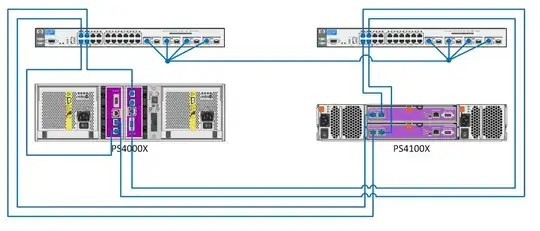I work for a small state college. We currently have 4 ESXi hosts (all made by Dell), 2 EqualLogic SANs (PS4000 and PS4100) and a bunch of old HP Procurve switches. The current setup is very far from being redundant and fast so we want to improve it. I read several threads but get even more confused.

The Procurve Switches are 2824. I know they don't support Jumbo Frames and Flow Control at the same time, but we have plans to upgrade to something like Procurve 3500yl. Any suggestions? I heard Dell Powerconnects 6xxx are pretty good but I'm not sure how they compare to HPs.
There will be a 4-port Etherchannel (Link Aggregation) between the switches, and all control modules on SAN will be connected to different switches.
Is there anything that will make the setup better? Are there better switches then Procurves 3500yl that cost less than 5k? What kind of bandwidth can I expect between ESXi hosts (they will also be connected to 2824 with multiple cables) and SANs?